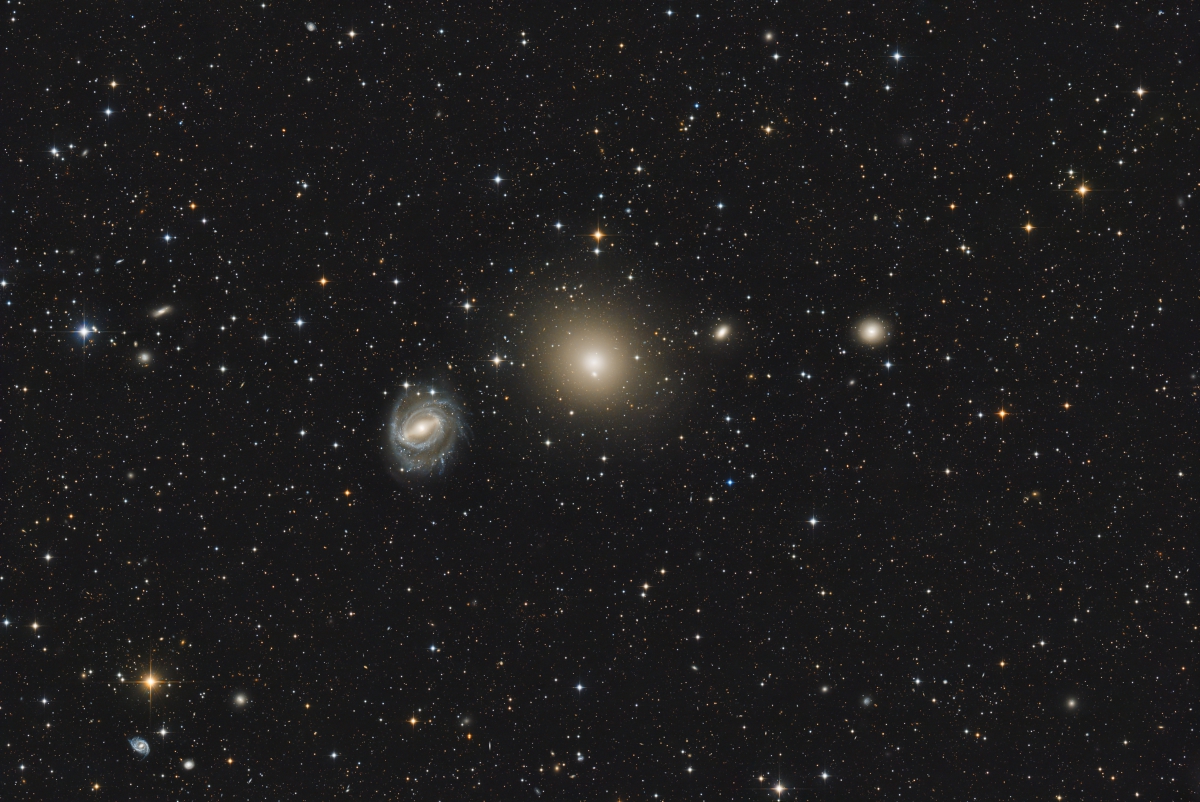
[back] NGC 5850 with NGC 5839/45/46 in Virgo[NED]
Higher resolved image /
höher aufgelöstes Bild (6005 x 4012 pixel)

|
(c) 2024 All astro photo images are copyrighted. They may not be used or reproduced without explicit written permission from the authors. |
|
300" |
|
About this Image / Über dieses Bild
|
CCD: |
Omegon veTEC410c |
|
Image Type, Orientation: |
RGB Composite. North is at 12:00. |
|
Exposure time: |
108x300 sec. 1x1 bin (9:00h total) |
|
Exposure date: |
June 3rd,4th 2024 |
|
Location: |
Skinakas Observatory at Crete, Greece, remote-controlled from Bad Arolsen/Germany |
|
Filter: |
RGB: Internal Bayer-Matrix |
|
Instrument: |
Ganymed 60cm-Hypergraph in primary focus (f=1815.9 mm) |
|
Seeing (FWHM): |
2.1" |
|
Photographer: |
Josef Pöpsel, Frank Sackenheim, Stefan Binnewies |
|
Remarks: |
This image shows
the galaxy pair NGC 5850 and NGC 5846. NGC 5850, much like NGC 5701, is a
barred spiral galaxy observed face-on. However, at first glance, it becomes
evident that the structure of this galaxy is significantly more complex than
that of NGC 5701. This is likely due to the gravitational interaction with
its neighboring galaxy, NGC 5846. |
|
Bemerkungen: |
Diese Aufnahme zeigt das Galaxienpaar NGC 5850 und NGC
5846. NGC 5850 ist, ähnlich wie NGC 5701, eine Balkenspiralgalaxie, die wir
in der Draufsicht (face-on) sehen. Allerdings fällt sofort auf, dass die
Struktur der Galaxie deutlich komplexer ist als die von NGC 5701. Dies
dürfte auf die gravitative Wechselwirkung mit der Nachbargalaxie NGC 5846
zurückzuführen sein. |
Back to the Galaxies' Overview / Zurück zur Galaxien-Übersichtsseite